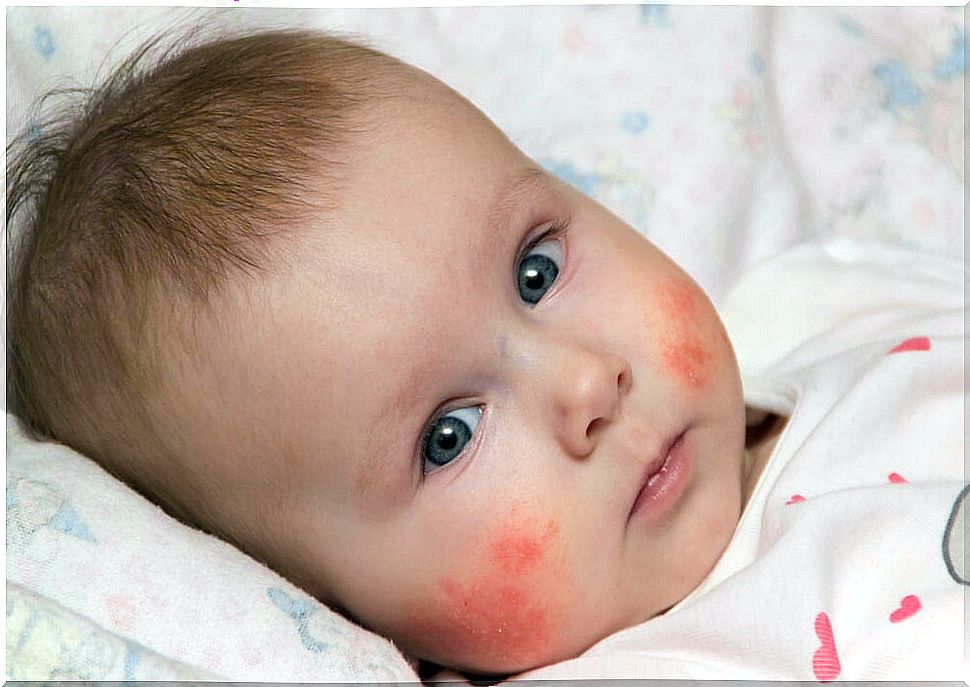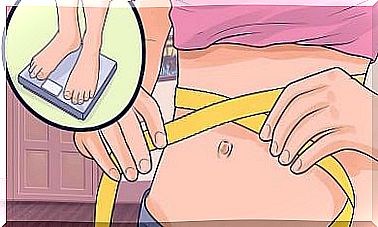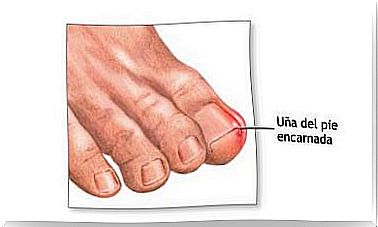Atopic Dermatitis In The Baby, Basic Care
Atopic dermatitis in babies is one of the most frequent skin affections that can appear in the first months of life. Being a chronic disease, its main care will be the prevention and relief of the symptoms that occur with it.
Early detection of this dermatological condition will favor the behaviors of family members to reduce the symptoms and discomfort it generates.
What is atopic dermatitis in the baby?
Among the different stages that children go through are the infant, child or school phase and adolescence. In this sense, in medicine the baby is named with the concept of infant to differentiate it from other stages.
Atopic dermatitis in the baby usually begins between the third and fifth month of life. At this stage these skin lesions are more frequent. They usually appear in outbreaks of about six weeks, although they can also be continuously.
According to this information from the Spanish Association of Pediatrics (AEPED), it is an inflammatory skin disease that presents dry skin as one of the most significant signs in babies. This picture is usually accompanied by very intense itching or itching.
It is usually active up to two years, date on which it either perpetuates in time or disappears. It is a disease typical of childhood and has a certain hereditary component. For this reason, family history is a factor that must be taken into account.

When to consult with the pediatrician?
Atopic dermatitis in babies does not have specific characteristics, but varies according to each individual. For this reason, it is very difficult to differentiate it from other dermatitis. Only the child’s pediatrician will be able to diagnose atopic dermatitis after assessing the baby’s signs and symptoms.
Therefore, it is advisable to consult with the pediatrician if any of the following manifestations is observed in the infant:
- Nonspecific lesions on the skin, especially in the facial region and in the flexure area.
- Course of lesions in outbreaks or maintained over time.
- Frequent crying of the infant, which may be associated with itching in the affected areas.
How does atopic dermatitis debut in the baby?
Atopic dermatitis in babies can appear in different ways, although the most common are those that we will discuss in the following lines.
Lesions usually appear on the cheeks, forehead, ears, and scalp. From the facial region, it can subsequently spread to the rest of the body. They are usually very itchy eczemas and sometimes a certain degree of exudation, as evidenced by this study published in the journal Peruvian Dermatology .
Likewise, as this research published in the Annals of Pediatrics shows , atopic dermatitis in babies may appear accompanied by sensitization to the protein of egg white. For this reason, diagnosed infants must be tested for sensitization to this food.
Care to prevent atopic dermatitis in the baby

To care for atopic dermatitis in babies, a good health education is required for family members on specific care:
- Wash baby’s clothes with mild detergents and avoid fabric softener.
- Avoid heat, especially hot air. To do this, it is necessary to eliminate wool fabrics, plastics and some fibers that favor the appearance of sweat and, with it, the presence of injuries. For this reason, cotton clothing should be used.
- Humidifiers for ambient dryness in regions where humidity levels are low.
- Carry out the baby’s hygiene with short baths or showers, no more than 2-3 times a week, since excess water and exposure to gels favor the appearance of lesions. It is recommended to use acidic pH or oatmeal gel.
- Apply emollient creams several times a day with a gentle massage for proper penetration into the skin.
Drug treatment
There are situations in which the signs or symptoms that form atopic dermatitis in the baby require pharmacological treatments and supervision by the doctor to avoid complications :
- When there are outbreaks, it is necessary to go to the pediatrician to determine the topical anti-inflammatory treatment regimen. In addition, emollient creams used in the prevention phase should be eliminated.
- Avoid the appearance of skin infections. They usually appear due to the scratching generated after the itch appears. Proper hygiene must be maintained. Upon suspicion, the pediatrician may recommend the application of topical or systemic antibiotics.
- One of the drugs most prescribed by pediatricians in this disease is topical corticosteroids. You should not be afraid of applying this treatment correctly, since it provides great benefits for the baby who has these affectations.
In short, in case of presenting some of the described symptoms of atopic dermatitis, it is always advisable to go to the pediatrician to provide an adequate diagnosis and treatment for the child’s case.









